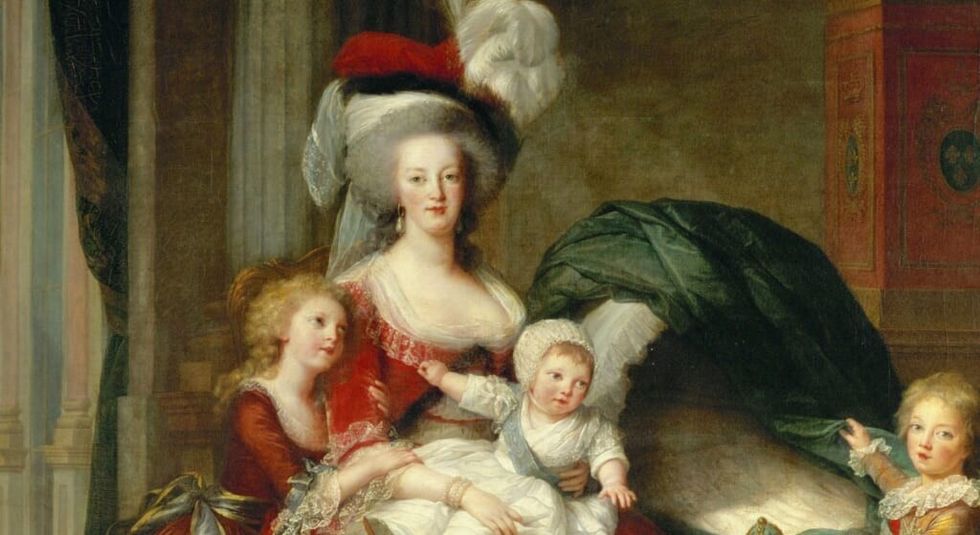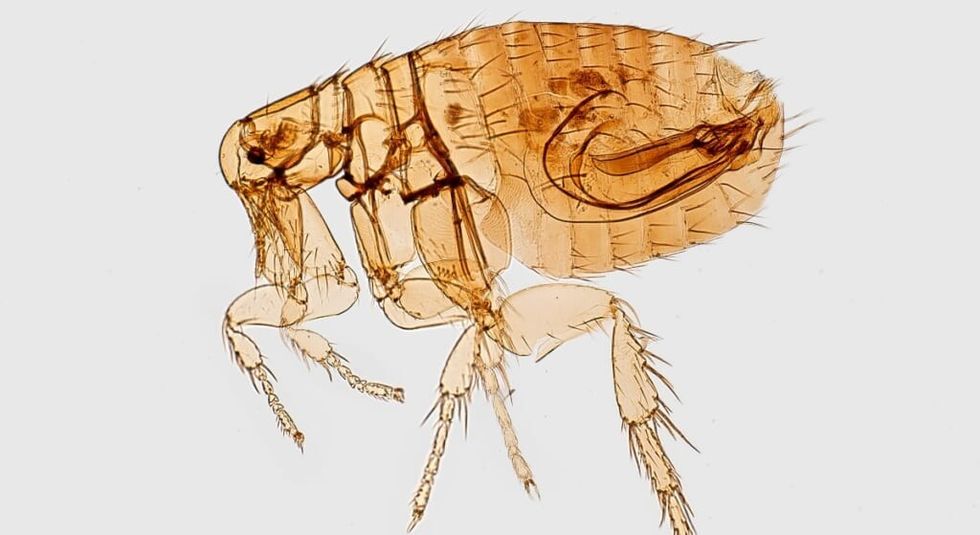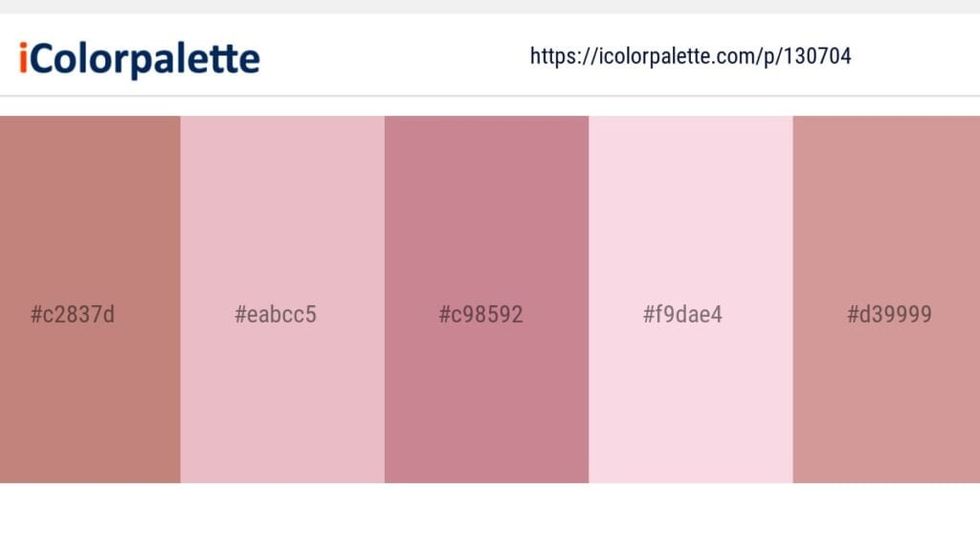This is the story of a color named for fleas. That’s right, parasitic blood-sucking fleas.
See, in French, the word “puce” literally means flea. In English, however, it names a color that’s
as hard to precisely describe as it is to understand the origin of. But we’ll manage to cover both
before we’re done today.
RELATED: Aura Colors & Their Meanings: A Comprehensive Guide
Puce, which rhymes with “goose” or “juice,” by the way, is essentially a shade of purple tinted
with brown. Yes, it’s a lovely… purplish-brown. Perhaps puce isn’t one of the aura colors, maybe
it’s not a great choice for entryway wallpaper, nor is it a favorite crayon shade with the kids, but
for a brief moment about 250 years ago, it was wildly popular.
Let’s talk about the history of the color first, before discussing its actual, well, color, as it’s a
fascinating (and slightly disconcerting) history indeed.
How Puce Became the High Society “It” Color of 1775

Today, when a celebrity pops up on Instagram wearing this or that pair of jeans on the street, a
specific brand of sunglasses on the beach, or a chic dress on the red carpet, it’s a sure bet that
sales of said brand are going to get a bump. Two and a half centuries ago in French high society,
the leading “celebrities” of the day were members of the royalty, and none was a bigger
influencer, so to speak, than the young queen of France, the ill-fated Marie Antoinette.
Known for her outlandish hairstyles, huge, flowing, oft-multi-layered dresses, lavish jewelry,
and her grandiose sense of self to match, Maria Antoinette, wife of King Louis the XVI (an also
ill-fated figure, of course) could and did set the fashion world of her day into a frenzy. Such it
was with the color we now know as puce.
RELATED: The Simpsons’ Popularity In China And Egypt Is A Shockingly Deep Lesson In Global Unity
According to The Awl, one day early in the summer of the year 1775 the young queen donned a
new dress that had been made for her in a decidedly unusual color; indeed it was a color so
new and unique it didn’t even have a name. The name would come care of King Louis himself,
who, upon seeing his fashion-forward wife in her new gown, exclaimed: “C’est puce!” Which
means, effectively: “Looks like a flea!”
Now, if you have the stomach for it, go ahead and do an image search of a flea, and look
specifically at the engorged belly of one of the little parasites that has recently had a meal. That meal, of course, will have been a mammal’s blood, and thus the belly will be a purplish-
brownish hue owing to the blood showing through the small flightless insect’s body. That
unique hue is what Louis the XVI was referring to. (Flea-human interactions were much more
common in the 18 th century than they are today, even for royalty, it seems; be glad you’re on
this end of that balance.)
Now, for the record, the king was not trying to insult his wife. In fact, calling someone “ma
puce,” or “my flea” is a term of endearment in French, per The Local, rather like calling
someone a “honey bee” or “love bug” in English. And far from denigrating her new dress, the
king praised it. Soon, court nobles had caught sight of the new shade, and within a matter of
weeks the color puce had become one of the most popular shades anywhere in France. (Well,
anywhere people had money to buy brand new dyed clothing, at least.)
Why Puce Was So Popular in the Summer of 1775

Puce got its start because of Marie Antoinette (and her husband) as noted, but its popularity
among ladies in French society is explained by more than just the fact that the guillotine-bound
beauty wore a dress in the color. It’s also explained by the fact that, in its “purest” form, puce is
a dark, rich color. That meant it hid stains well, thus puce clothing required less frequent
laundering, looked newer and fresher longer, and would need replacing less often than
garments in other colors.
RELATED: This Tennessee Park Leaves the Colorblind Speechless
And while puce was initially associated with the highest order of royalty, it was in fact a less
expensive color to produce than many other shades, which was also welcome news to ladies of
lesser means.
Despite how popular puce became that summer of 1775, it also lost popularity as fast as
parachute pants went out in the 1990s. By the autumn of that same year, it was out of style.
But, as it happened, puce would never be gone from the collective vocabulary, the color now
having been born.
So, What Color Is Puce, Anyway?

If you’re willing, do go ahead and find an image of an engorged flea, because that brownish-
purple color you’ll see in its belly really is a perfect shade of puce. Overall, it’s hard to nail this
color down because people tend to play pretty loose and free with it.
One brand may display a color much closer to pink and call it puce, while another’s will be
decidedly more purple. Some will have a more grayish undertone to the color, be it pinkish or
purplish, while others will have a browner coloration along with the purple. Or pink.
RELATED: RELATED: Awaken the Fire Within: 5 Ways to Connect to Your Spiritual Flame
We can never know for certain what Marie Antoinette’s dress looked like that summer of 1775
given that color photography was still about 90 years out (that’s right, the first color photo was
produced in the year 1861, per Open Culture), but it’s safe to assume it was indeed a mix of
purple and brown.
What we do know is that even back in 1775, there was more than one shade going around
called puce, per The Not So Innocents Abroad. There was a deep, rich “ventre de puce” named
for a flea’s sanguine belly. There was “cuisse de puce,” or flea thigh, which was more toward
the brown. And there was “vielle puce,” or old flea, which referred to a slightly more washed-
out or faded-looking puce.
Now, flea belly, flea thigh, and old flea may hardly seem strong selling points today, but they
worked 250 years ago, if only for a few months.
KEEP READING:
Is Google Sentient, Do Chatbots Have Souls – And Why Does Any of This Matter?
Credit: Source link



